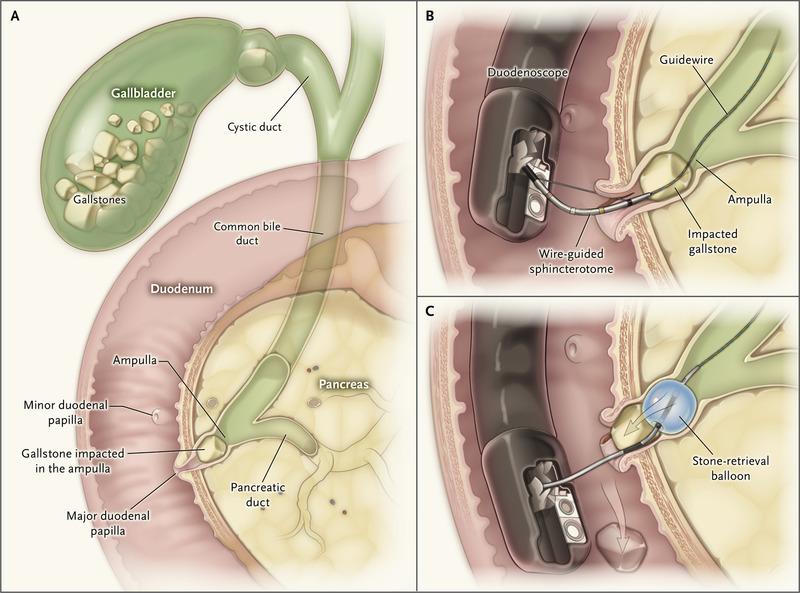
The most common cause of pancreatitis world wide is “alcohol”. But the second most common cause is stones inside the gallbladder. It is also known “biliary pancreatitis”. The common notion amongst the surgeons is if the gallbladder has small stones, the patient is more likely to have jaundice or pancreatitis as these have a larger probability of slipping down in the common bile duct. But if the patient has large stones, they are more likely to get impacted at the neck of the gall bladder and cause distension, swelling and infection of the gallbladder. In fact, in some cases of long standing obstruction, the color of the bile inside the gall bladder turns white from green and this is known as “white bile” and the gall bladder is known as “hydrops of the gall bladder or mucocoele”.
Now coming to the incidence of having pancreatitis due to gallstones. Most cases, it is of mild variety. The stone may spontaneously pass out of the bile duct. The patient will experience excruciating pain the in the midline and above the naval area in such a situation. If the stone remains impacted at the level of the valve and does not fall down spontaneously, then it has to be removed urgently by a procedure called ERCP. It is an endoscopic technique to clear the bile duct of stones. It will prevent aggravation of the attacks of pancreatitis and the inflammation in the pancreas will gradually settle down. Once the serum amylase returns to near normal and the liver enzymes show a decreasing trend, the patient should under go the surgery for cholecystectomy in the same index admission. If the surgery is delayed, there is strong likelihood that another stone may pass down the bile duct causing recurrent pancreatitis.
In a small percentage of cases, the pancreatitis is severe and has to be managed by a multidisciplinary team of gastroenterologist, Intensivist, and the surgeon together along with a interventional radiologist. It can be an alarming and a serious situation. This can easily be avoided if timely intervention is done, and surgery for gallstones is performed as soon as they are diagnosed


